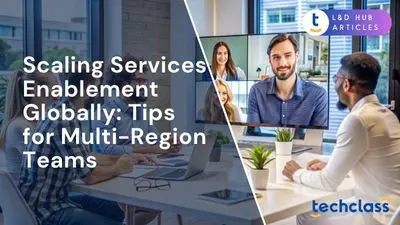
In today’s competitive business landscape, many companies rely on external partners (such as resellers, distributors, and affiliates) to expand their reach and drive sales. But simply signing a partnership agreement isn’t enough; if those partners lack the proper support, even a promising channel relationship can fall flat. This is where partner enablement comes in. Partner enablement is all about ensuring your channel partners have the knowledge, tools, and support to effectively sell and support your products or services, ultimately transforming them into an extension of your own sales team.
For business owners, HR professionals, and enterprise leaders across industries, understanding partner enablement is key to maximizing the value of channel partnerships. An enabled partner network can unlock new markets and customer segments, boost revenue, and maintain a consistent customer experience. This article explores what partner enablement entails, why it is critical for channel success, and how to implement an effective partner enablement program.
Partner enablement is the process of equipping your external partners with the training, resources, and tools they need to sell and support your offerings effectively. These partners (which might include resellers, agents, franchisees, or other channel allies) should be given the same kind of support that you provide to your internal sales team. In practice, partner enablement covers everything from initial onboarding and product training to ongoing education, marketing support, and performance feedback. The goal is to make partners as confident and knowledgeable about your products as your own employees, so they can represent your brand with competence and consistency.
While partner enablement shares similarities with sales enablement for in-house teams, there are important differences in approach. Your partners are independent businesses that often juggle multiple vendors’ products, including competitors, and they don’t work under your direct supervision. That means your enablement content must be concise, clear, and ready-to-use without constant hand-holding. For example, messaging and product information provided to partners should be finalized and straightforward, since partners won’t have the luxury of iterative training and daily check-ins that an internal team might get. Additionally, building strong relationships is crucial. Partners may not voice concerns or ask questions unless you proactively foster open communication.
Crucially, partner enablement is not a one-time onboarding event but an ongoing effort. As one channel expert aptly put it, “With enablement, there’s no end date. You need to be thinking about how to help your partners grow their business and yours all the time.” In other words, successful partner enablement requires continuous engagement. As your products evolve or new market trends emerge, you must keep partners up-to-date through refresher trainings, newsletters, and knowledge sharing. This continuous support ensures that partners remain motivated and capable of delivering value to customers over the long haul.
Investing in partner enablement yields significant benefits for both your organization and your partners. When done right, it can be a game-changer for your channel strategy. Here are some of the key reasons why partner enablement is critical for channel success:
Building a successful partner enablement program involves several core components. Below are the essential elements you should incorporate to set your partners up for success:
A structured onboarding process is the foundation of partner enablement. As soon as a new partner joins your channel program, they should receive comprehensive training on your company, products, and sales processes. This includes educating them on product features and benefits, ideal customer profiles, pricing, and competitive differentiators. Effective onboarding might involve workshops, online courses, certifications, or shadowing opportunities to ensure partners grasp how to sell and support your offerings. Ongoing training is just as important – schedule regular update sessions or e-learning modules to keep partners current on new product releases and industry developments. A “train continuously” mindset prevents partners from falling behind as things change.
Equip your partners with a library of up-to-date sales and marketing materials. Partners should have easy access to product brochures, demo videos, presentations, case studies, FAQs, and competitive battlecards. In essence, they should be able to utilize any content your direct sales team uses, tailored for partner use. Providing co-branded materials and templates is also valuable, allowing partners to market your product under their own brand alongside yours. The easier it is for partners to find and use high-quality collateral, the more effectively they can generate leads and communicate your value proposition. Consider hosting these resources in a centralized partner portal or content repository so that partners always retrieve the latest versions.
Supporting partners with the right tools can greatly enhance their efficiency. One fundamental tool is a good partner portal or platform where partners can access all enablement resources, register deals, and collaborate with your team. Additionally, giving partners access to relevant technology – for example, a demo account or instance of your software, a customer relationship management (CRM) system for tracking joint opportunities, or other sales tools like quoting platforms or ROI calculators – will help them manage deals effectively. Technical support resources are another aspect of enablement: ensure partners know how to get help from your technical team or knowledge base when they encounter complex product questions. By leveraging technology and clear processes, you make it simpler for partners to engage with your company and drive sales.
Incentive programs are a powerful component of partner enablement. Remember that your partners have their own business goals, and they often sell multiple products. To keep them focused on yours, you need to make it rewarding. Set up incentive structures such as competitive commission rates, performance bonuses, market development funds (MDF) for co-marketing, or tiered rewards for hitting sales milestones. Recognize and celebrate high-performing partners through awards, spotlights, or exclusive benefits. Non-monetary incentives can matter too – providing leads, offering advanced training or certifications, or inviting partners to special networking events can all strengthen engagement. Effective incentives align your partners’ success with your own, motivating them to invest time and effort in selling your products.
Maintaining open lines of communication with your partner ecosystem is essential. Regular check-ins, business reviews, and feedback sessions help you understand partner needs and address issues early. Many companies use monthly newsletters or webinars to keep partners informed about product updates, upcoming campaigns, and best practices. It’s also wise to assign a dedicated partner manager or support contact who can answer questions and troubleshoot problems for your partners. Accessible support (whether via a helpdesk, Slack channel, or phone line) ensures partners never feel “out on an island” when challenges arise. The more supported a partner feels, the more confidence they will have in pitching and deploying your solutions. In turn, this fosters a collaborative relationship where partners are comfortable providing feedback that can help you improve the program.
(Together, these components create an environment where partners have the competence, materials, and motivation to succeed. Next, we’ll look at how to put these pieces into practice through effective strategies and habits.)
Establishing a partner enablement program requires not just the right components but also the right approach. Here are some best practices and steps to help your enablement strategy thrive:
By following these best practices – setting clear goals, tailoring your approach, keeping engagement continuous, communicating openly, and rewarding success – you create a strong foundation for partner enablement. Over time, you’ll likely find that your enabled partners require less direct intervention and start taking more initiative in driving mutual business growth. That outcome is the hallmark of a mature, effective partner enablement program.
In an era where collaboration and ecosystems drive business success, partner enablement has emerged as a critical discipline. It aligns directly with a simple truth: when your partners win, you win. By investing in the training, resources, and support your channel partners need, you empower them to sell more confidently and competently. The payoff is a broader market presence and increased sales that would be hard to achieve alone. Equally important, you foster deeper relationships built on trust and mutual benefit, transforming transactional resellers into long-term strategic allies.
For organizations of all sizes and industries, the message is clear. Treat your partners as an extension of your team. Give them the knowledge and tools to represent you well, and maintain open, ongoing communication. Doing so requires effort and planning, but the results are well worth it. Enabled partners will not only contribute more revenue, but also enhance your brand’s reputation and reach. They’ll bring in new customers, innovate with you, and stick around for the long haul. In summary, partner enablement isn’t just a nice-to-have initiative; it’s a smart investment in sustainable channel success. By helping your partners grow, you ultimately create a rising tide that lifts all boats, benefiting both your partners’ success and your own.
Partner enablement is the process of equipping your external partners with training, resources, and tools to effectively sell and support your products, which is critical for expanding market reach, increasing sales, and building strong relationships.
While similar, partner enablement focuses on supporting independent channel partners who may sell multiple vendors' products and operate with less direct oversight, requiring concise, ready-to-use content and proactive relationship building.
Essential components include partner onboarding and training, sales and marketing collateral, tools and technology support, incentives, and ongoing communication and support.
Continuous support keeps partners updated on product developments, market trends, and provides ongoing education, ensuring they remain confident and capable over time, not just during onboarding.
Through competitive incentives, performance rewards, public recognition, tiered programs, and providing opportunities for advanced training and exclusive benefits to foster engagement and loyalty.


